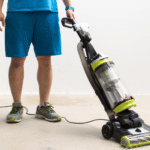Gel manicures are known for their long-lasting shine, chip resistance, and glossy finish that can survive daily wear and tear far better than regular nail polish.
Whether you’ve just gotten your nails done at Nail Palace, The Nail Lab Singapore, or Ulta Beauty Salon,
or used an at-home gel kit from OPI GelColor, Gelish, or CND Shellac, eventually, that perfect manicure will start to grow out.
Instead of rushing to the salon for removal every time, you can easily and safely remove gel nail polish at home with the right tools, patience, and technique.
Doing it properly not only saves you money but also prevents nail damage, brittleness, and thinning that often comes from improper removal methods.
This complete guide walks you through the entire process step-by-step — from understanding how gel polish works, to safely soaking it off,
and repairing your nails afterward — all using real-world tools, professional products, and proven salon techniques.
1. Understanding Gel Nail Polish and Why Proper Removal Matters
Gel polish is a hybrid formula — part traditional nail lacquer, part liquid gel — that hardens under UV or LED lamps.
Unlike regular nail polish that dries through air exposure, gel polish chemically cures into a durable layer that bonds tightly to your nail plate.
Popular brands like OPI GelColor, CND Shellac, Gelish, LeChat Perfect Match, Kiara Sky, and Red Carpet
Manicure have perfected the formula for salon-quality manicures that can last up to two to three weeks without chipping.
However, this durability comes at a cost. Because of how tightly the polish adheres to the nail surface, improper removal — like peeling, scraping, or prying the polish off — can take layers of your natural nail with it.
This causes long-term damage, leading to thin, sensitive nails, white patches, or painful breakage.
That’s why learning the correct removal process is so important.
Proper removal maintains your nail health, keeps the surface smooth for your next manicure, and reduces the chance of fungal infections or overexposure to harsh chemicals.
Even professional nail artists at salons like Allure Nails, Paintbox, or Olive & June follow these steps to ensure every manicure transition is healthy and damage-free.
2. What You’ll Need: Essential Tools and Products to Remove Gel Polish at Home
Before you start, set up a clean workspace with everything you need.
You’ll find most of these items in the nail care section of Sephora, Target, Walmart, or Amazon, or any professional beauty supply store.
Having everything ready ensures a smooth, organized process without mess or interruptions.
🧰 Complete Supplies Checklist:
- 100–180 grit nail file or emery board — Brands like OPI, ORLY, or Flowery Beauty provide salon-grade files that gently remove the top layer.
- Pure acetone (100%) — Avoid “acetone-free” removers. Go for Onyx Professional 100% Acetone, Zoya Remove+, or Sally Beauty ASP Gel Remover for best results.
- Cotton balls or pads — These hold acetone on the nail’s surface for effective soaking.
- Aluminum foil (cut into small squares) or gel removal clips — To wrap around each nail for better heat retention.
- Cuticle pusher or orangewood stick — Essential for gently scraping softened gel residue.
- Nail buffer block (240 grit) — Smooths the surface post-removal.
- Cuticle oil — Choose hydrating formulas like Essie Apricot Oil, CND SolarOil, or Cuccio Revitalizing Cuticle Oil.
- Hand cream or nail serum — Post-removal hydration with brands like The Body Shop, Burt’s Bees, or OPI ProSpa.
💡 Pro Tip: If you have sensitive skin or nails, consider using acetone-resistant gloves or applying a thin layer of petroleum jelly (Vaseline) around your cuticles to prevent dryness and irritation.
3. Step-by-Step: How to Remove Gel Nail Polish at Home Without Damaging Your Nails
Now let’s dive into the full removal process. Follow these six key steps carefully to remove gel polish efficiently, just like a nail technician would at a professional salon.
Step 1: File the Top Layer of Gel Polish
Start by filing the glossy top coat from your nails using a 180-grit nail file.
The top layer acts as a protective shield, so removing it allows the acetone to penetrate through the gel layers more effectively.
File gently and evenly — your goal is to break the seal, not to remove the entire polish yet. You should see a slightly matte surface once done.
Recommended Tools:
- OPI Edge 180 File
- ORLY Black Board File
- Tweezerman Neon FileMate
Expert Tip: Always file in one direction to prevent heat buildup and nail thinning. If you feel any warmth or friction, pause for a moment before continuing.
Step 2: Soak Cotton Pads with Acetone
Next, take small pieces of cotton and soak them generously in pure acetone.
You can also use pre-soaked wraps designed specifically for gel removal, such as Red Carpet Manicure Gel Polish Remover Wraps or CND Offly Fast Wraps.
Avoid using standard “acetone-free” removers since they’re designed for regular polish and won’t break down cured gel formulas.
Real-World Acetone Products:
- Onyx Professional 100% Acetone (available at Walmart & Target)
- Sally Beauty ASP Gel Polish Remover
- CND Offly Fast Moisturizing Remover
- Zoya Remove+ (acetone-based with hydrating agents)
💅 Quick Tip: Add a few drops of cuticle oil or aloe extract to your acetone if you want to reduce its drying effect without weakening its power.
Step 3: Wrap Nails in Foil or Use Gel Removal Clips
Once each cotton pad is soaked, place it over the nail and wrap it tightly with aluminum foil.
This creates a mini “steam chamber” that helps the acetone stay warm and effective.
Alternatively, you can use gel polish removal clips, which are reusable and eco-friendly.
Leave your nails wrapped for 10–15 minutes. During this time, the acetone softens the gel layers and weakens the adhesive bond between the polish and your nail plate.
Popular Accessories:
- Kiara Sky Reusable Soak-Off Caps
- Makartt Nail Clips
- Dashing Diva Foil Nail Wraps
⚠️ Safety Tip: Keep your hands away from open flames or hot surfaces during this process — acetone is highly flammable.
Step 4: Gently Push Off the Softened Gel Polish
After soaking, unwrap one nail at a time and use a cuticle pusher or orangewood stick to gently lift and remove the softened gel. The polish should flake off easily.
If you notice resistance, don’t force it — rewrap the nail for another 5–7 minutes and let the acetone continue working.
Recommended Tools:
- Revlon Cuticle Pusher & Trimmer
- Sally Hansen Dual-Ended Tool
- Tweezerman Pushy & Nail Cleaner
💡 Salon Tip: Always push the gel in one direction and keep the tool at a low angle to prevent scratching your nail surface.
Step 5: Buff and Smooth Your Nails
Once all the gel residue is removed, gently buff your nails with a 240-grit buffer to restore smoothness and remove any remaining polish. Don’t over-buff — just even out the surface.
Popular Buffers:
- Olive & June Buffer Block
- Flowery 4-Way Buffing Cube
- OPI Brilliance Buffer
After buffing, rinse your hands with warm water and mild soap to remove acetone residue and nail dust.
Step 6: Rehydrate and Repair Your Nails
Acetone is drying, so your nails and cuticles will need deep hydration afterward. Apply a generous amount of cuticle oil, followed by a rich hand cream to lock in moisture.
Recommended Aftercare Products:
- CND SolarOil (contains jojoba and vitamin E)
- Essie Apricot Cuticle Oil
- OPI ProSpa Nail & Cuticle Oil
- The Body Shop Almond Hand Cream
- Burt’s Bees Lemon Butter Cuticle Cream
Massage the oil into your nails and surrounding skin for 1–2 minutes daily for a few days to restore flexibility and shine.
🌿 Pro Tip: For extra recovery, soak your nails in warm olive oil for 10 minutes twice a week. It’s a natural conditioner that nourishes and strengthens brittle nails.
4. Alternative Method: Using Steam Gel Polish Removers
If you prefer not to use foil or cotton, modern steam gel polish removers offer a cleaner, faster method.
Devices like MelodySusie Steam Off Remover, Vishine Nail Steamer, or Nailmate Steam Remover work by heating acetone vapor inside a sealed chamber, softening the gel polish without direct soaking.
The steam penetrates the gel layers within 5–10 minutes, loosening the bond without mess or dripping.
These devices are reusable, eco-friendly, and ideal for frequent gel users who want less acetone exposure.
💨 Pro Tip: Always follow the device’s safety instructions. Never exceed the heating time or add extra acetone beyond the recommended level.
5. Common Mistakes to Avoid When Removing Gel Polish at Home
Even with the best tools, small mistakes can harm your nails. Avoid these at all costs:
🚫 Peeling the polish off manually – This removes natural nail layers, leaving rough, paper-thin nails.
🚫 Skipping the top-file step – The acetone won’t penetrate the gel effectively.
🚫 Using metal scrapers aggressively – They can scratch and weaken your nail surface.
🚫 Skipping hydration after removal – Acetone severely dehydrates nails and cuticles.
🚫 Soaking nails too long – Overexposure can cause skin irritation and nail sensitivity.
6. Nail Aftercare Routine: How to Keep Nails Healthy After Gel Removal
Your nails deserve a little TLC after every gel removal session. Taking care of them between manicures ensures strength, flexibility, and smooth texture.
Recommended Nail Recovery Routine:
- Soak nails in warm olive oil for 10 minutes to replenish lost oils.
- Apply a strengthening base coat like OPI Nail Envy, Sally Hansen Hard as Nails, or Duri Rejuvacote.
- Use a moisturizing nail mask — brands like Nails Inc. Overnight Detox Mask work wonders overnight.
- Apply cuticle oil twice daily, especially before bed.
- Avoid gel manicures for a week or two to let your nails fully recover.
🌸 Bonus Tip: For daily maintenance, use a nail serum with biotin or keratin to promote growth and reduce brittleness. Popular choices include Nailtiques Formula 2 and Ella+Mila First Aid Kiss Nail Strengthener.
7. Frequently Asked Questions
Can I remove gel polish without acetone?
Yes, some gel polish remover creams like BTArtBox Magic Remover or Eternal Gel Remover work without soaking, but they take longer and may not fully dissolve thicker coats.
How long should I soak my nails?
Usually 10–15 minutes is enough. However, brands like CND Shellac may require slightly longer since they use stronger bonding formulas.
Can I reuse foil wraps or clips?
Foil wraps are disposable, but clips are reusable. Clean clips with rubbing alcohol after every use.
Does acetone damage my nails?
Acetone can dry out nails temporarily, but it doesn’t cause permanent damage if followed by proper hydration and care.
8. Final Thoughts: Safely Remove Gel Nail Polish at Home Like a Pro
Removing gel nail polish at home isn’t just about convenience — it’s about maintaining your nail health and preventing long-term damage.
By following the professional soaking method with pure acetone, gentle filing, and consistent aftercare, you can achieve salon-quality results right from your home vanity.
Brands like OPI, CND, Gelish, Sally Hansen, and Olive & June all emphasize proper removal as the key to stronger, healthier nails.
So next time your gel manicure starts to lift or grow out, skip the temptation to peel. Instead, follow this step-by-step guide, treat your nails with care, and they’ll stay beautiful, strong, and ready for your next stunning color.






